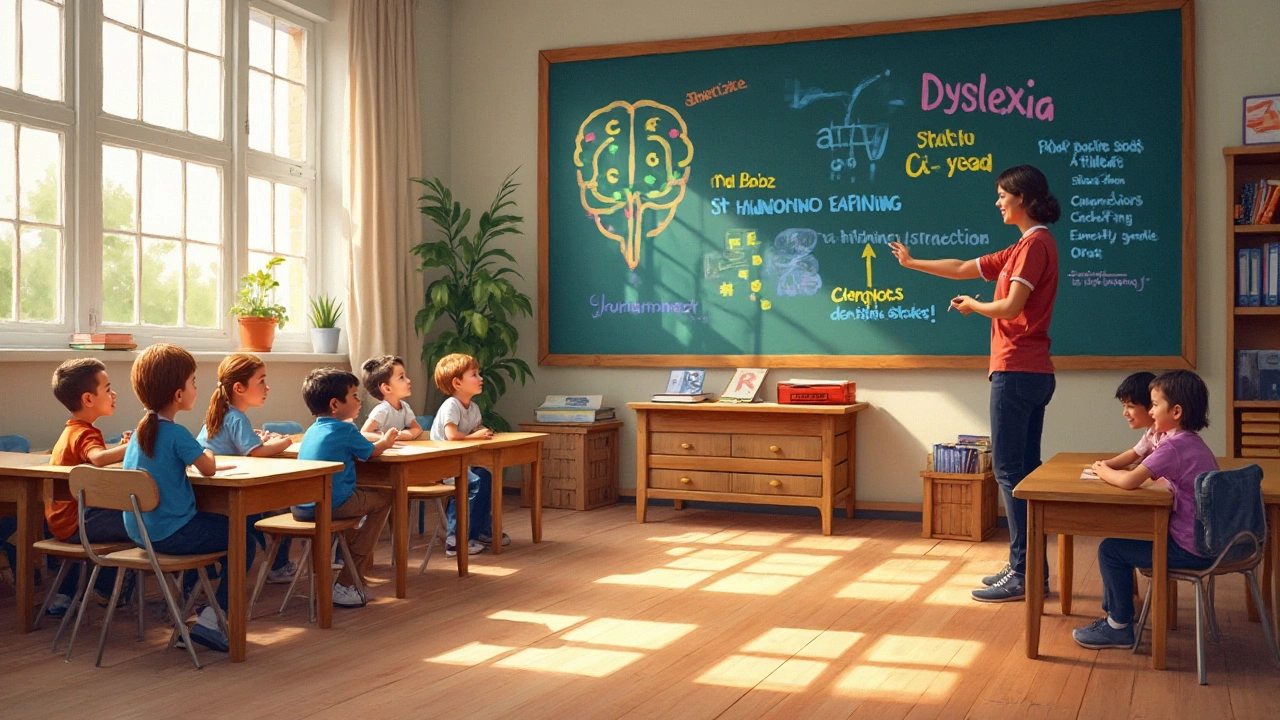Tag: special needs education
-
27
- 0
Learning disabilities don't define intelligence. See how people can be smart, successful, and creative—with ADHD, dyslexia, and more. Explore facts, support, and tips. Read more
-
26
- 0
Wondering which learning disability pops up the most in classrooms? Dyslexia leads the pack, affecting reading, writing, and sometimes spelling. This article digs into what dyslexia really looks like, how you can spot early signs, and what families or teachers can do to help. Expect real-life tips and facts that smooth everyday challenges for students. Get a clear view on navigating school life with dyslexia. Read more
-
18
- 0
Do kids in special education programs have the chance to succeed? This article crushes old assumptions and brings you down-to-earth facts, practical ideas, and inspiring real-life examples. Discover what works, what gets in the way, and how parents and teachers can help kids with learning differences find their own version of success. Straight talk, busting myths, and hands-on tips—nothing sugarcoated. If you care about special education, you're in the right place. Read more
-
30
- 0
Understanding different types of disabilities is key to providing appropriate support in education. This long-read article explores 14 distinct types, offering practical insights to help educators and caregivers tailor their approaches. From physical impairments to cognitive challenges, each type presents unique needs and potential ways to foster learning and engagement. Read more
-
26
- 0
Attention Deficit Hyperactivity Disorder (ADHD) is often misunderstood and its classification as a learning disability is debated. This article delves into what ADHD is and how it affects learning. Recognizing the distinctions and overlaps between ADHD and learning disabilities is crucial for effective educational strategies. By exploring misconceptions and offering practical tips, parents and educators can better support those with ADHD in academic settings. Read more
-
12
- 0
Handling children with special needs requires understanding, patience, and tailored strategies. This article provides essential insights and actionable tips for both educators and parents. From identifying individual needs to implementing effective teaching methods, discover ways to create a supportive learning environment. Learn about the significance of collaboration among educators, parents, and specialists in fostering a thriving educational experience. Read more
-
31
- 0
Dyslexia is recognized as the most prevalent learning disability worldwide, affecting an estimated 5 to 10 percent of the population. It primarily impacts reading and can lead to challenges in decoding words, spelling, and comprehension. While it presents unique learning hurdles, early detection and tailored teaching strategies can significantly aid those with dyslexia. This article explores what dyslexia is, its indicators, and provides practical strategies for educators and parents to support affected individuals. Read more
-
30
- 0
Neurodivergence refers to the natural differences in brain function and behavior among individuals. To qualify as neurodivergent, one must typically exhibit traits or characteristics associated with conditions like autism, ADHD, or dyslexia. This article explores three primary ways individuals may be recognized as neurodivergent, providing insight into the varied experiences of those who think and learn differently. By understanding these distinctions, educators and caregivers can better support and foster environments that celebrate neurological diversity. Read more
-
15
- 0
Special needs in education encompass a diverse range of learning challenges faced by students due to disabilities or unique learning requirements. This article explores the definition of special needs, the importance of inclusive classrooms, effective strategies for educators, and the role of parents in supporting their child's education. By understanding these concepts, educators and parents can work together to create supportive and accommodating environments for all students. Read more
-
21
- 0
Autism mannerisms, often seen as repetitive behaviors or unique social interactions, are key features of Autism Spectrum Disorder (ASD). These mannerisms can include hand-flapping, rocking, or a preference for routine, serving as coping mechanisms or expressions of sensory experiences. Understanding these behaviors is essential for parents, educators, and caregivers to provide supportive environments that embrace neurodiversity. By learning to interpret these mannerisms, we can better support children with autism in their daily lives and educational settings. Read more
Tags Weight
- education
- study tips
- adult education
- exam preparation
- online courses
- adult learning
- lifelong learning
- distance learning
- GCSE revision
- online education
- private tutoring
- special needs education
- scholarships
- remote learning
- scholarship tips
- financial aid
- international students
- effective learning
- e-learning
- education funding










